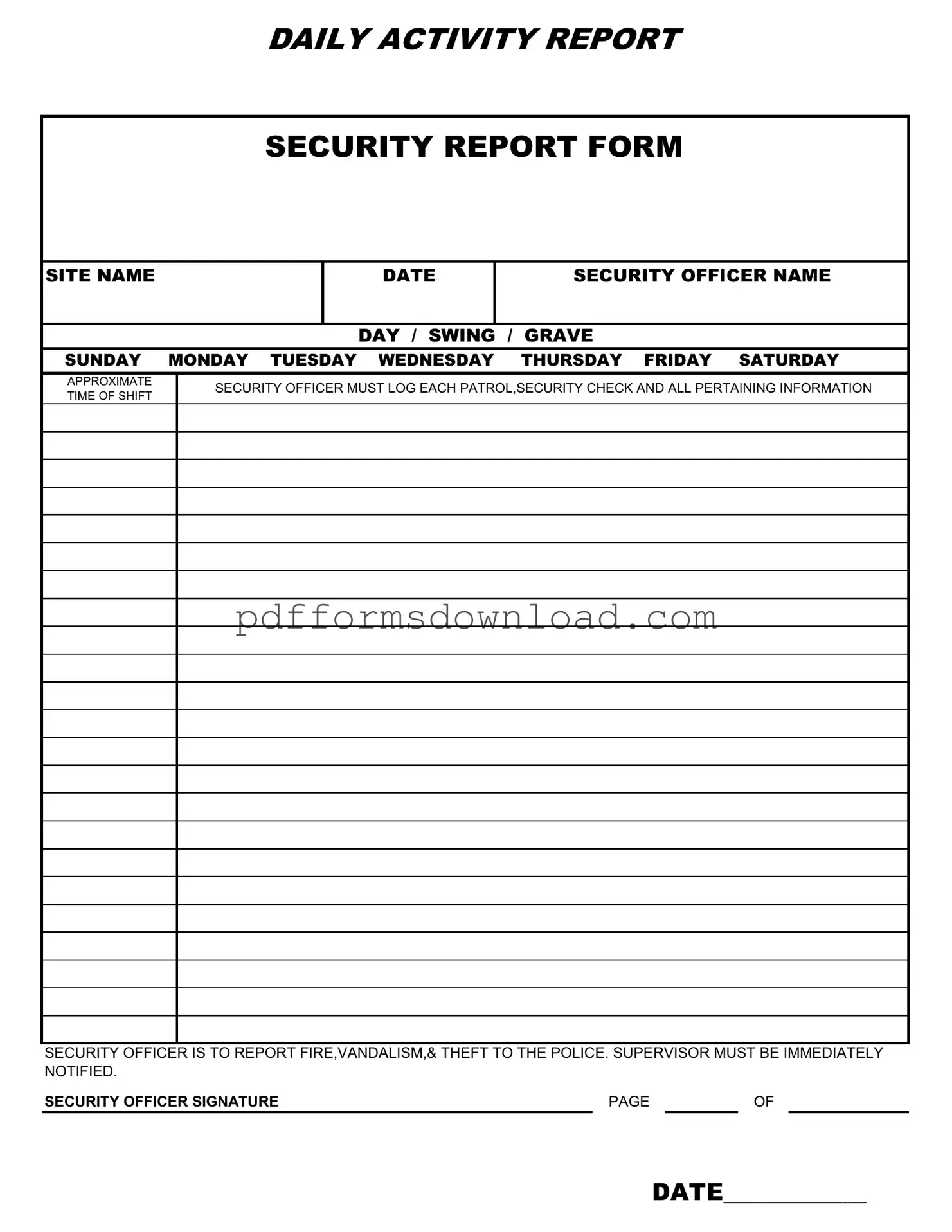What is the purpose of the Security Guard Daily Report Sample form?
The Security Guard Daily Report Sample form is designed to help security officers document their daily activities and observations. It provides a structured way to record important information such as patrols, security checks, and any incidents like fire, vandalism, or theft. This ensures that all relevant details are captured and can be referred to later if needed.
What information should be included in the report?
The report should include the site name, date, and the name of the security officer. Officers must log each patrol and security check, noting the approximate time of each activity. Additionally, any incidents such as fire, vandalism, or theft should be reported, and the supervisor must be notified immediately. The officer's signature at the end of the report confirms the accuracy of the information provided.
How often should the report be completed?
What should a security officer do if they witness an incident?
If a security officer witnesses an incident such as fire, vandalism, or theft, they must report it to the police immediately. Additionally, the supervisor must be notified right away. Prompt reporting is crucial to ensure that the proper authorities can take action and that the incident is documented accurately in the daily report.
Is there a specific format for logging patrols and checks?
While the report provides a framework, the specific format for logging patrols and checks can vary. Officers should include details such as the time of each patrol, the areas checked, and any observations made during those checks. Clear and concise entries help maintain an accurate record.
What happens if a security officer forgets to complete the report?
If a security officer forgets to complete the report, it can lead to gaps in documentation. This may affect the ability to respond to incidents effectively or to provide a clear account of daily activities. It’s important for officers to make it a priority to fill out the report at the end of each shift to ensure all information is captured accurately.
